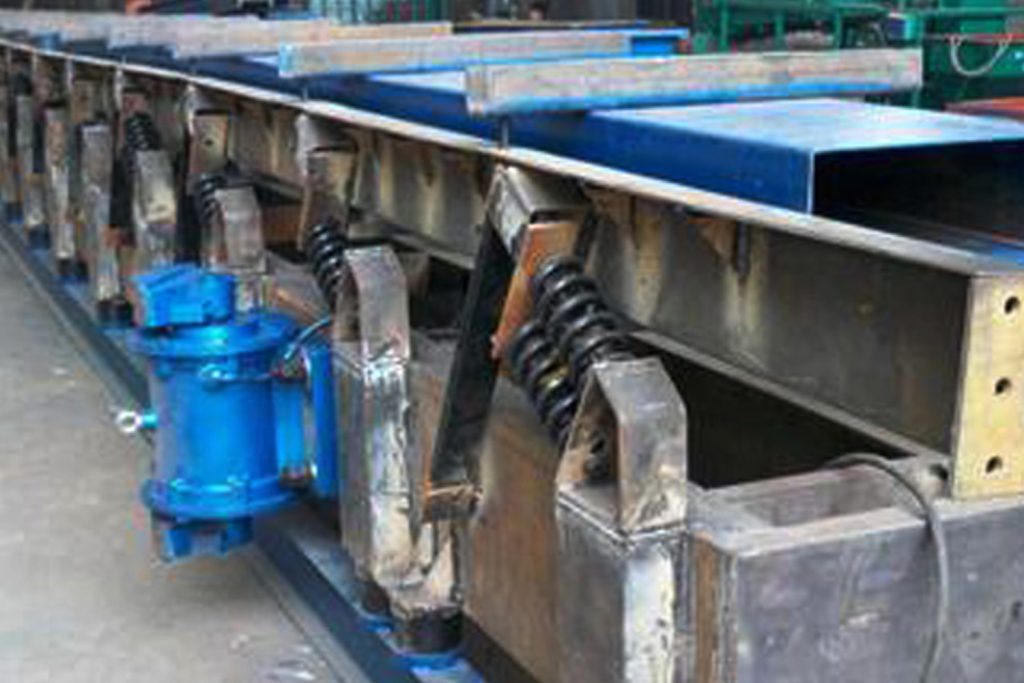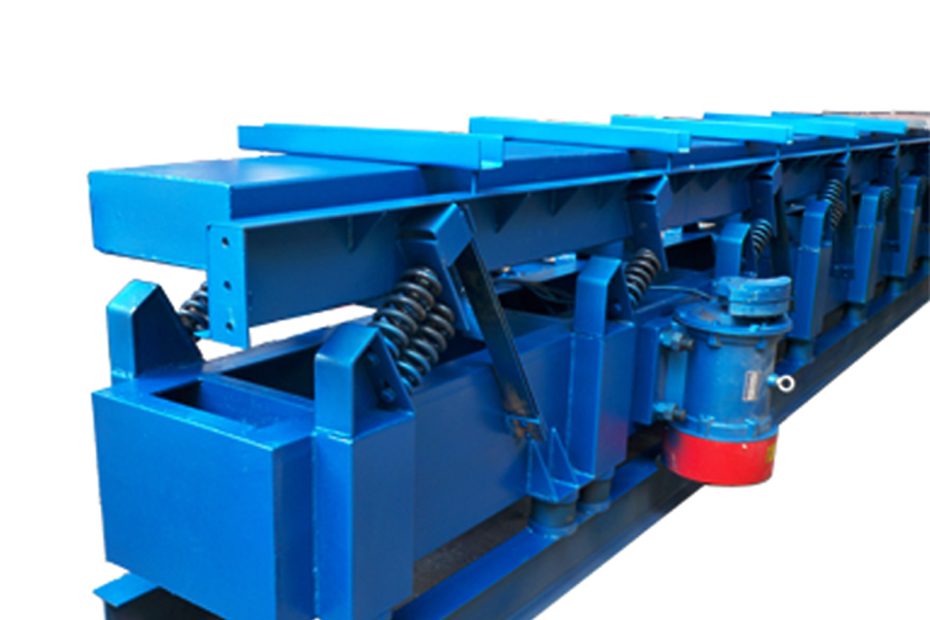A vibrating conveyor is a continuous conveying machine that uses an exciter to vibrate the trough, thereby causing the material in the trough to slide or throw in a certain direction.
A vibrating conveyor is a machine that uses vibration to complete material conveying work. Vibrating conveyors are mainly used for conveying block, granular or powdery materials. Vibrating conveyors have good sealing properties and can achieve dust prevention purposes economically and effectively.

Six Major Components Of An Unbalanced Dual-Mass Vibrating Conveyor
- Conveying pipe body. It is a rectangular pipe body welded by upper and lower half troughs. The pipe body is made of 6 mm thick A3 steel plate. In order to improve the strength of the pipe body, the welds of the upper and lower half troughs should be staggered.
- Base frame. The base frame is a steel frame welded by No. 28 channel steel. It can be divided into several sections according to the needs of installation and transportation. Each section is connected by connecting plates and bolts. To avoid excessive elastic bending vibration, the bending natural frequency of the entire machine must be staggered with the operating frequency. A cast iron counterweight is installed in the groove of the base frame channel steel and fastened to the channel steel with bolts. The motor base plate is also welded to the base frame.
- Guide rod. The function of the guide rod is to make the tube body vibrate along the vertical direction of the guide rod and support the weight of the tube body. The guide rod is connected to the tube body and the bottom through a rubber hinge.
- Shear rubber spring. Each group of shear springs is welded to a frame on the tube body. Spring seat, each spring seat has two shear springs, both sides of which are connected to the spring seat with bolts, and the inner side is connected to the pull rod. The other end of the pull rod is fixed to the base frame through a rubber hinge.
- Transmission part. It includes several parts such as the motor and eccentric shaft installed on the base frame, the angular pulley and the connecting rod. There is also a connecting rod spring at the head of the connecting rod, which is connected to the tube body through it.
- Vibration isolation spring. The cylindrical compression vibration isolation spring is placed in the upper spring seat below the base frame, and the lower part is floated in the lower spring seat.
Conclusion
Vibrating conveyors are mainly used to transport loose bulk or granular materials in horizontal or small inclination conditions, and can also transport powdered materials with a particle size of no more than 74μm. This model can be widely used for conveying powdered and granular materials in industries such as metallurgy, coal, building materials, chemicals, glass, electricity, machinery, and grain.
